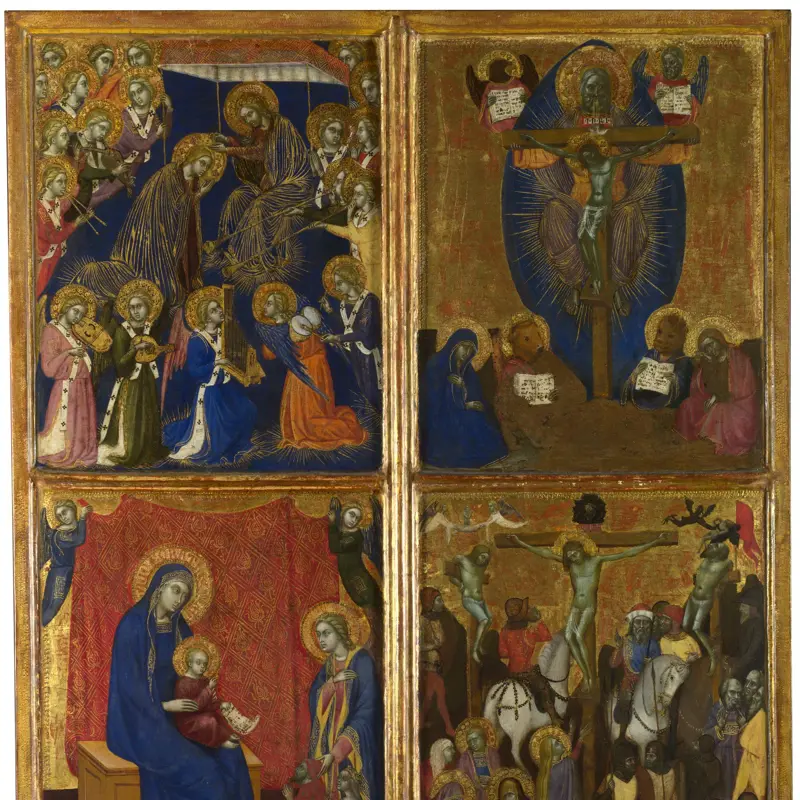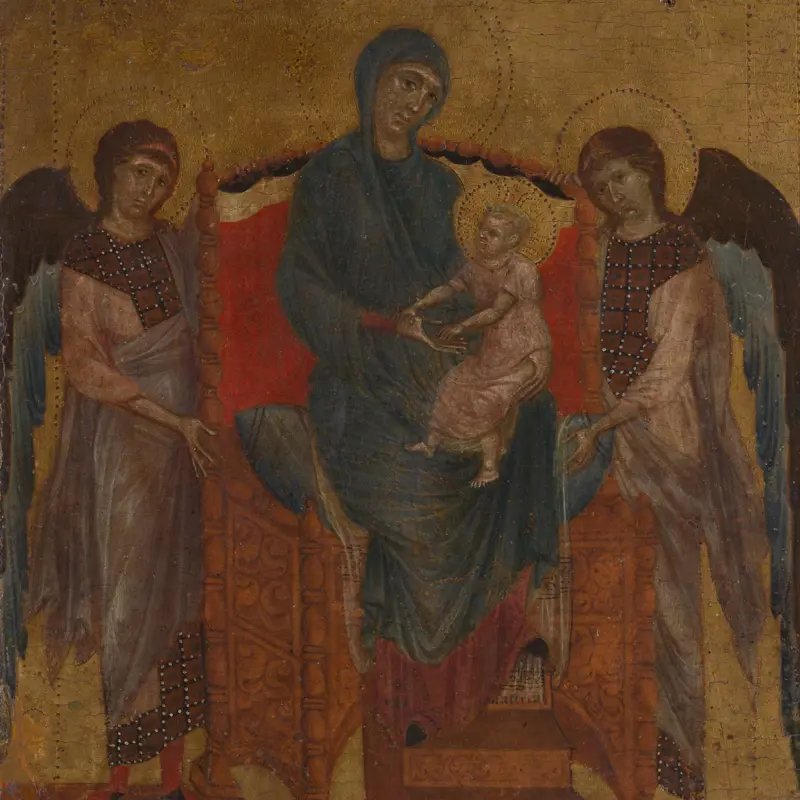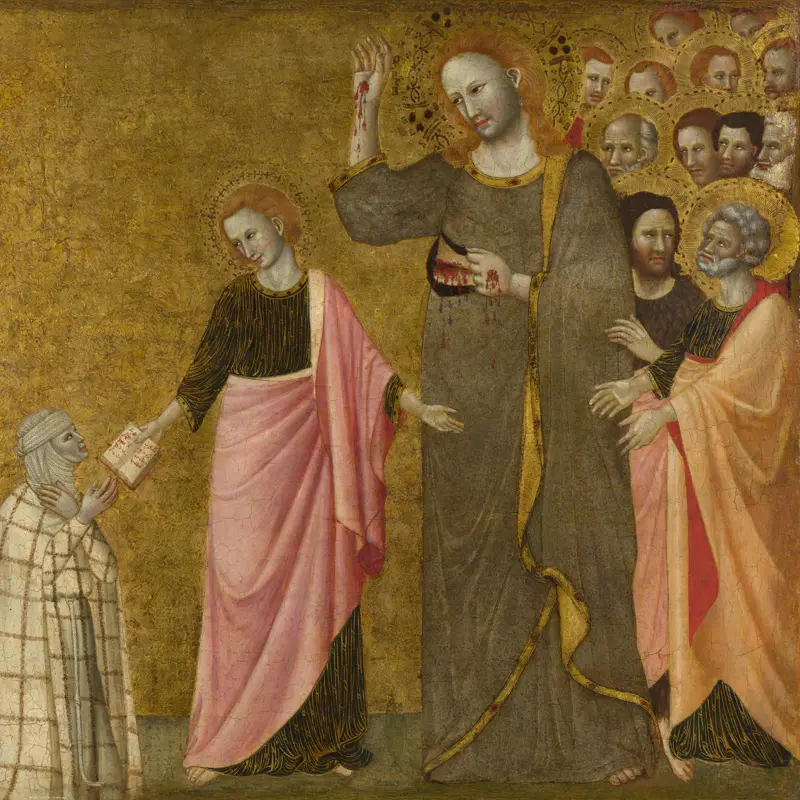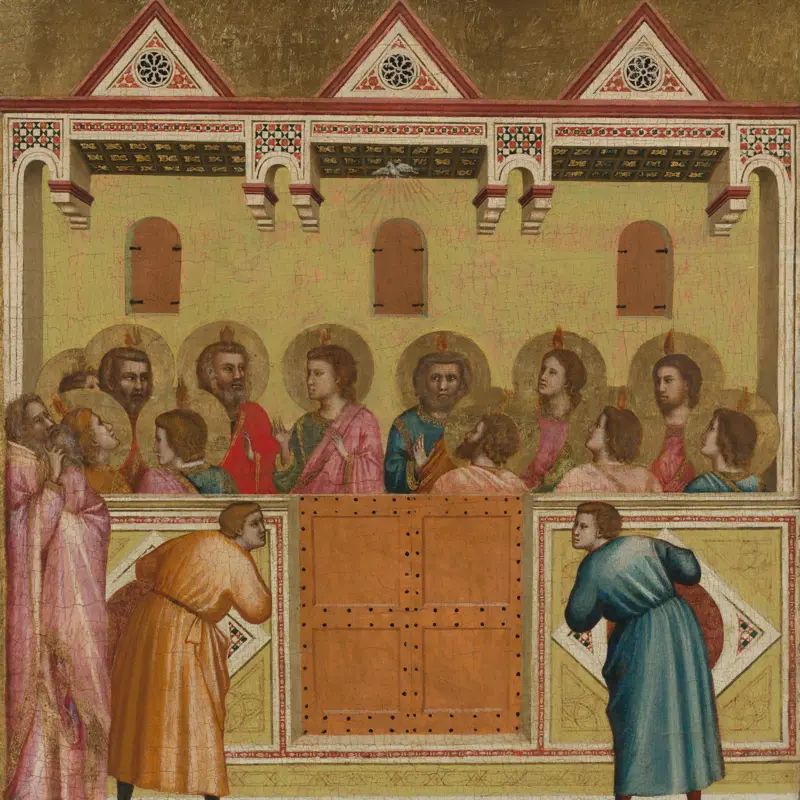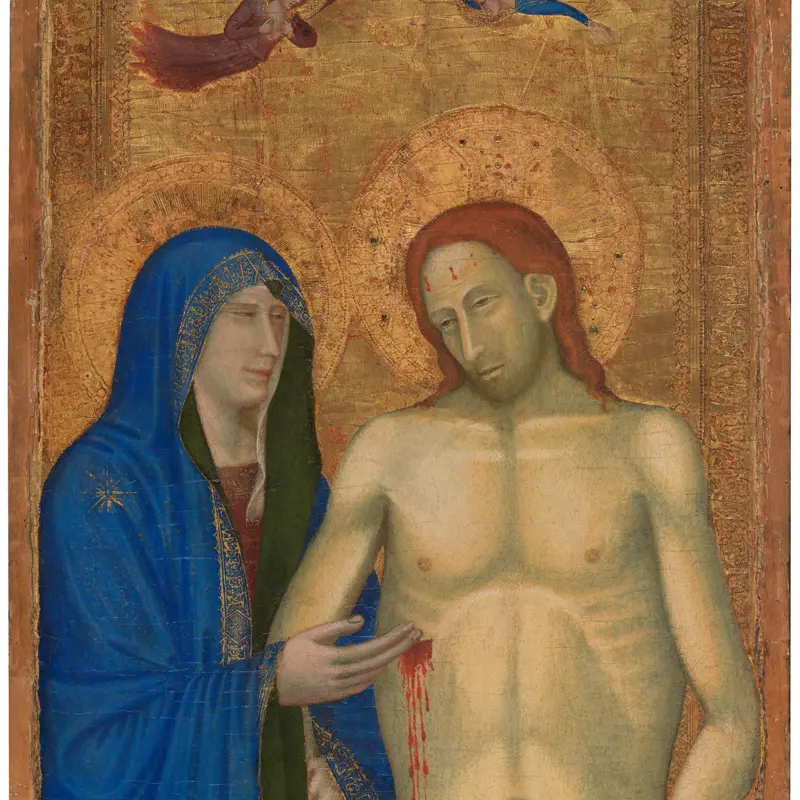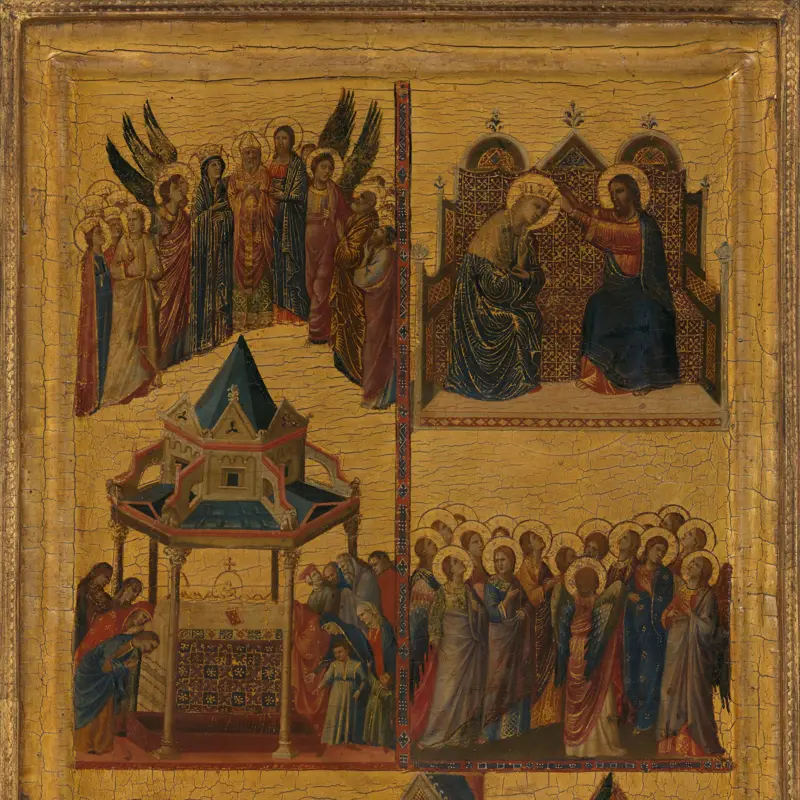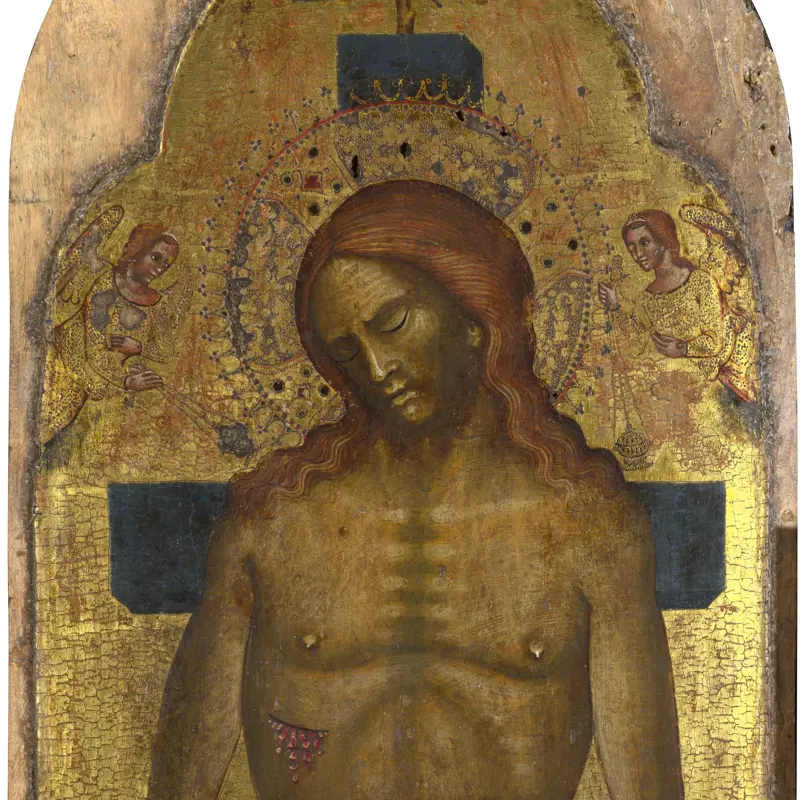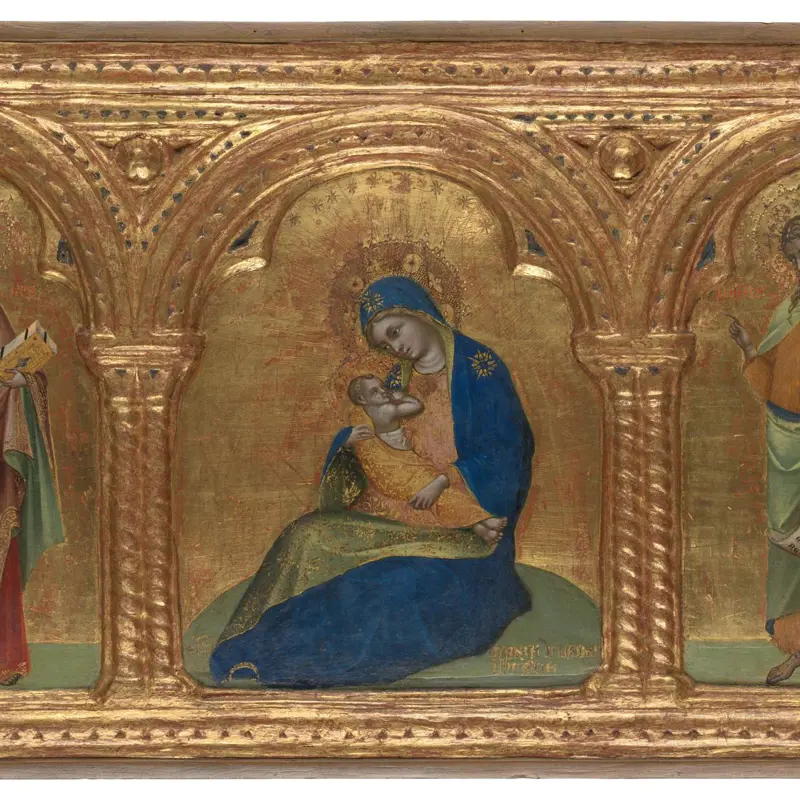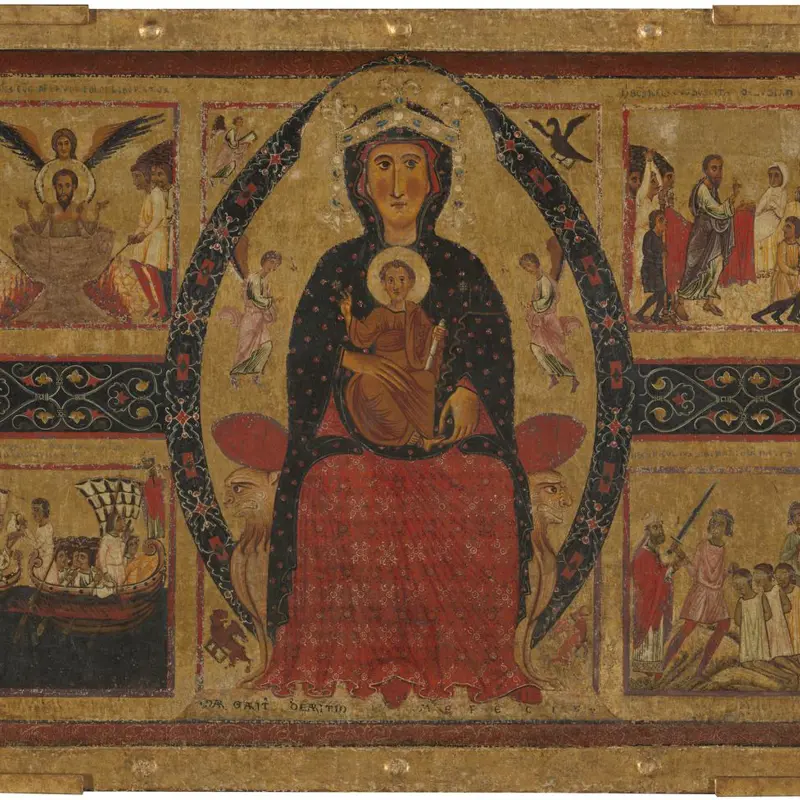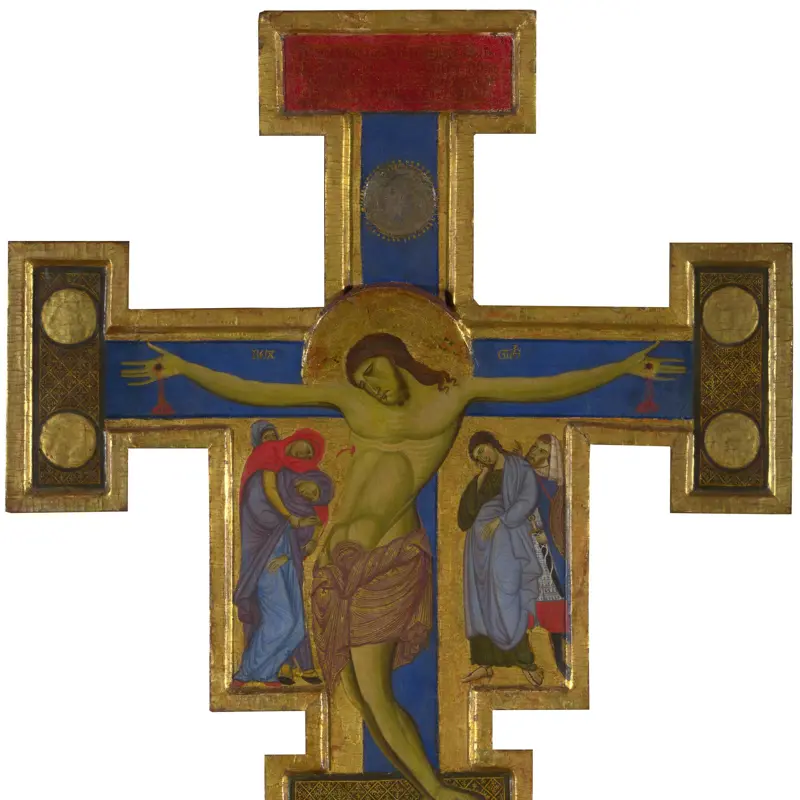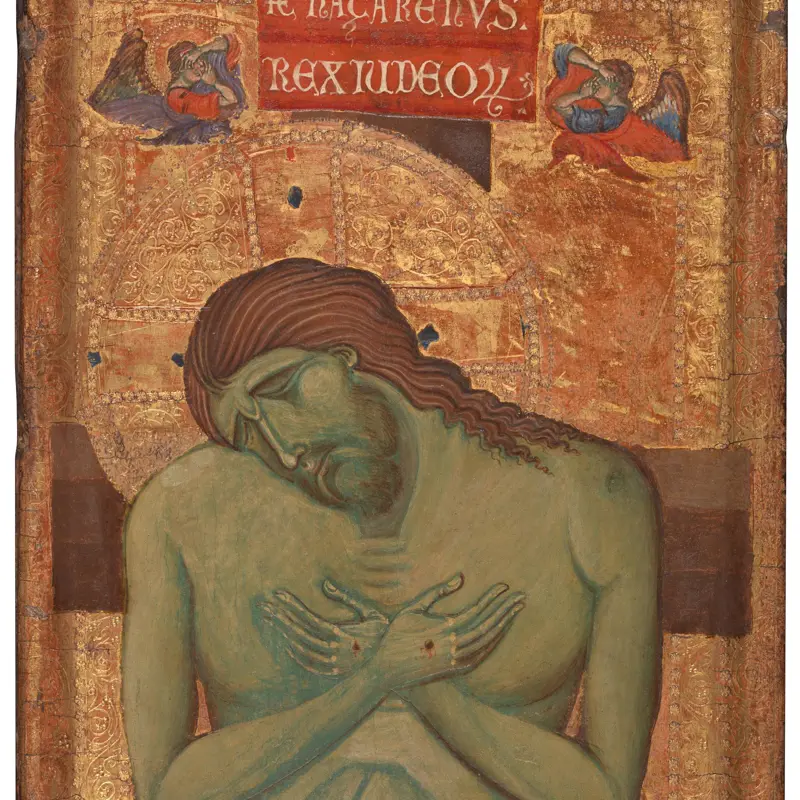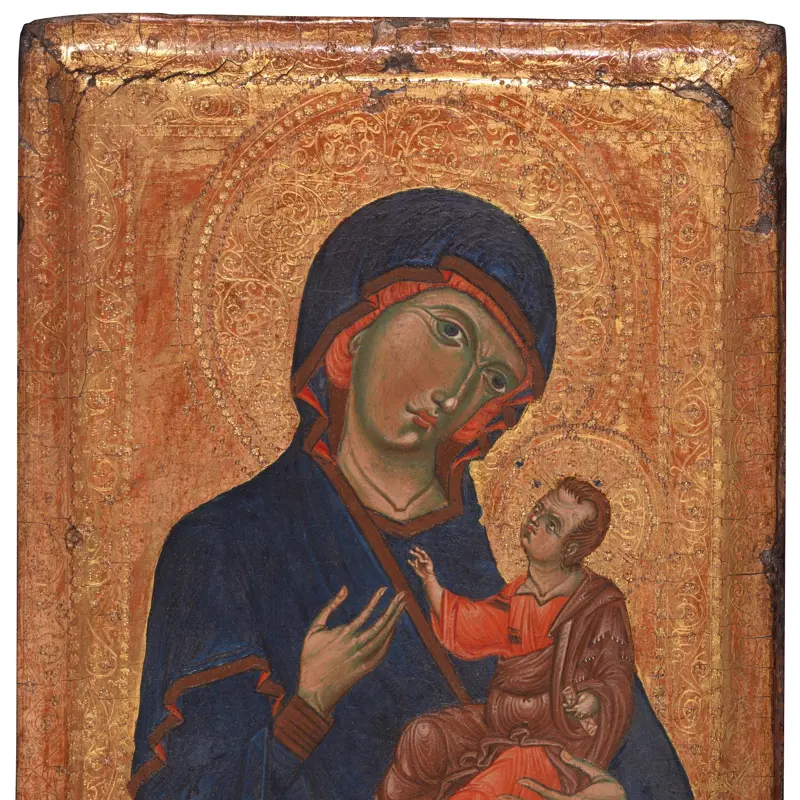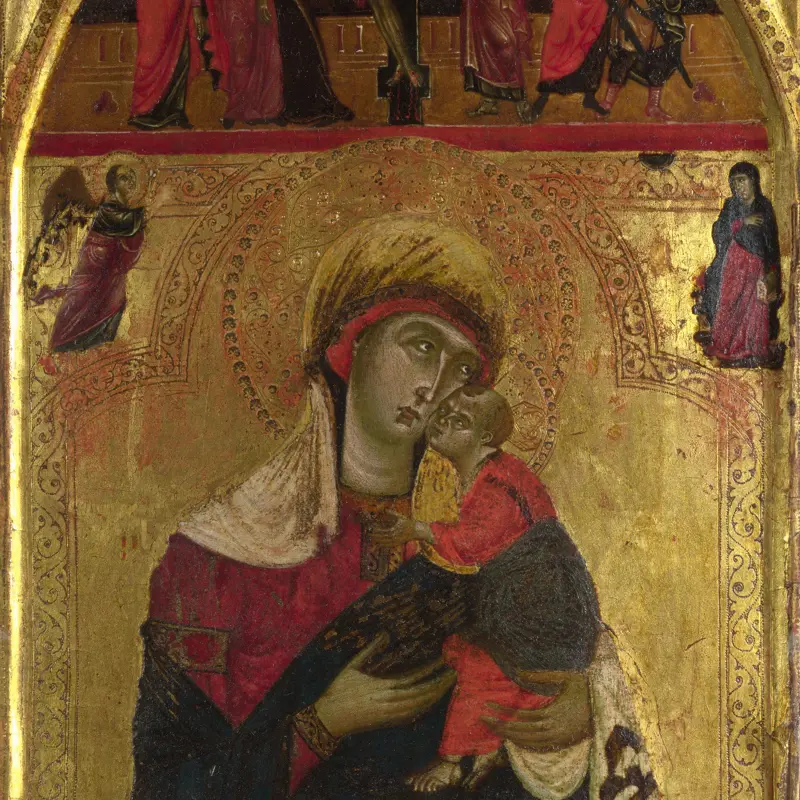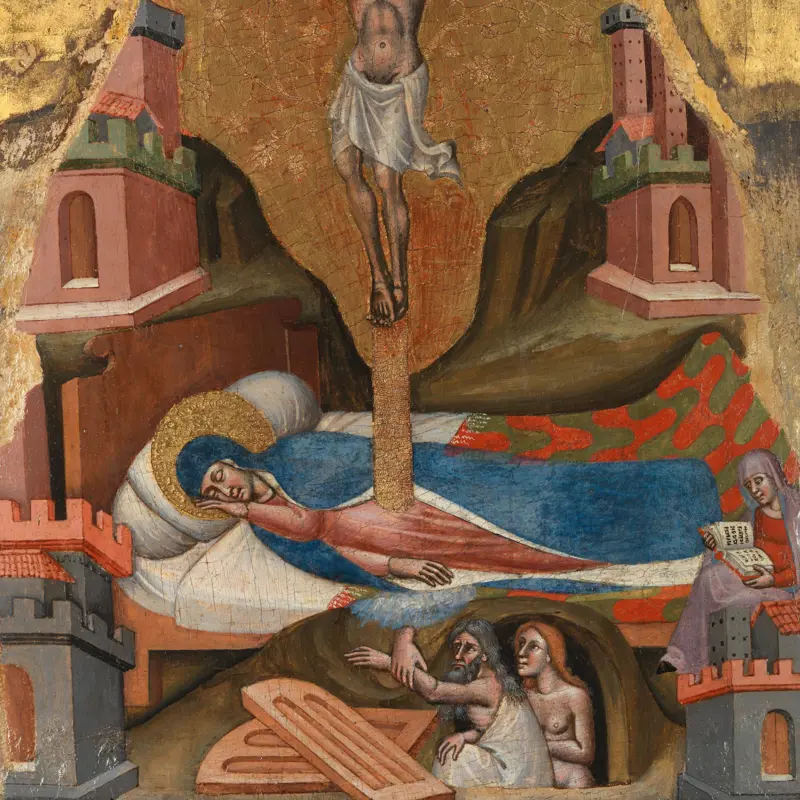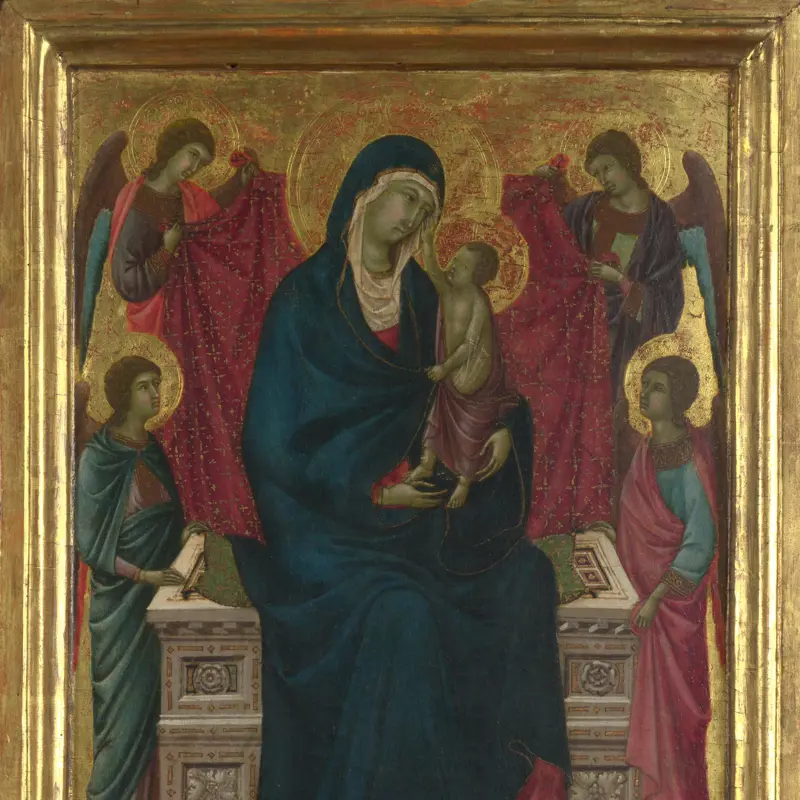This room contains the earliest paintings in the National Gallery Collection. They were made in central Italy nearly 800 years ago. These naturalistic and intimate images of love, grief and suffering responded to a new interest in the humanity of Christ. This emphasis on emotional connection with Christ emerged among communities like the Franciscan Order. Their church at Assisi became a centre for the exchange of ideas between leading painters of the day, including Cimabue and Giotto.
Artistic innovations spread across Italy as painters moved between towns and cities. Giotto, for example, travelled from his home in Florence to Assisi, Bologna, Rimini and Naples, where he worked as court painter to King Robert of Anjou (1278–1343).
Painters created small panels for personal devotion as well as larger works intended to be seen by many people from a distance, either on an altar or carried in procession. We don't know the names of all the artists who contributed to these developments in painting, but some like Margarito d'Arezzo often signed their work.


